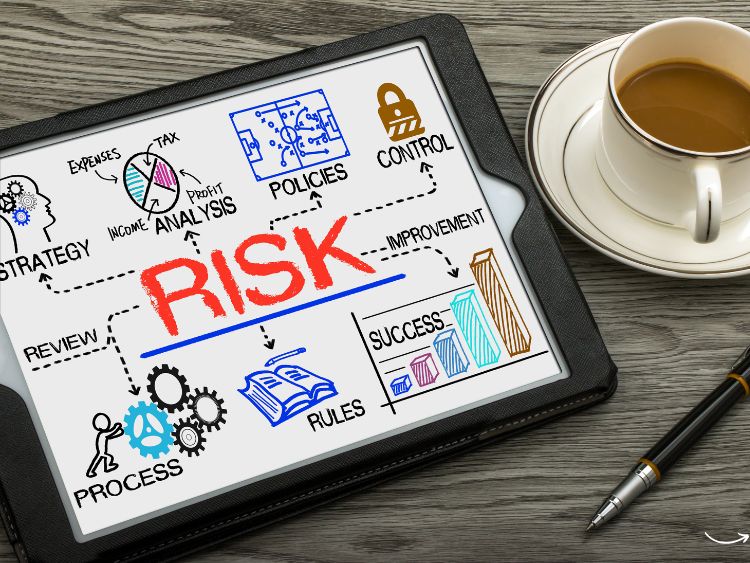In today’s ever-evolving business landscape, the ability to manage risk effectively can make or break an organization. Risk management is not just about avoiding pitfalls; it’s about strategically navigating through them to ensure long-term success. So, what are the benefits of risk management? In this comprehensive guide, we’ll explore the various advantages that proper risk management can bring to businesses, both large and small.
What is Risk Management?
Risk management involves identifying, assessing, and prioritizing risks followed by the coordinated application of resources to minimize, control, and monitor the impact of unfortunate events. It’s a proactive process that helps organizations prepare for the unexpected and mitigate potential losses.
The Key Benefits of Risk Management
1. Enhances Decision-Making
One of the primary benefits of risk management is that it enhances decision-making. When organizations have a clear understanding of the potential risks they face, they can make more informed decisions. This leads to better resource allocation, strategic planning, and ultimately, improved business outcomes.
2. Protects Assets
Risk management plays a crucial role in protecting a company’s assets, including its financial resources, physical property, and intellectual property. By identifying potential threats and implementing measures to mitigate them, businesses can safeguard their valuable assets and reduce the likelihood of significant losses.
3. Boosts Operational Efficiency
Effective risk management can lead to increased operational efficiency. By anticipating potential disruptions and planning accordingly, businesses can ensure that their operations run smoothly. This minimizes downtime and maximizes productivity, leading to better overall performance.
4. Enhances Reputation
A company’s reputation is one of its most valuable assets. By managing risks effectively, businesses can avoid incidents that could damage their reputation. This includes everything from data breaches to product recalls. A strong reputation builds trust with customers, investors, and other stakeholders, which is essential for long-term success.
5. Ensures Regulatory Compliance
In today’s regulatory environment, compliance is critical. Risk management helps businesses stay abreast of relevant laws and regulations, ensuring they remain compliant. This can prevent costly fines and legal issues, as well as protect the company’s reputation.
6. Improves Financial Stability
Risk management is integral to maintaining financial stability. By identifying and mitigating financial risks, businesses can avoid significant losses and ensure they have the resources needed to weather economic downturns or other financial challenges.
7. Fosters a Risk-Aware Culture
Implementing a robust risk management framework fosters a risk-aware culture within an organization. This means that employees at all levels understand the importance of risk management and are proactive in identifying and addressing potential risks. This collective vigilance strengthens the overall resilience of the company.
8. Facilitates Strategic Planning
Risk management is essential for effective strategic planning. By understanding the risks associated with various strategies, businesses can develop plans that are both ambitious and realistic. This ensures that they are prepared for potential challenges and can adapt as needed.
9. Enhances Customer Satisfaction
Customers value reliability and trustworthiness. By managing risks effectively, businesses can provide consistent and high-quality services or products, which enhances customer satisfaction and loyalty. Happy customers are more likely to become repeat customers and advocates for the brand.
10. Promotes Business Continuity
One of the most critical benefits of risk management is its role in promoting business continuity. By identifying potential threats and developing contingency plans, businesses can ensure that they can continue operations even in the face of significant disruptions. This is vital for maintaining customer trust and safeguarding long-term profitability.
FAQs About the Benefits of Risk Management
What are the key components of a risk management process?
The key components of a risk management process include risk identification, risk assessment, risk prioritization, risk mitigation, and risk monitoring. Each of these steps is crucial for developing a comprehensive risk management strategy.
How does risk management improve decision-making?
Risk management improves decision-making by providing a clear understanding of potential risks and their impacts. This allows businesses to make more informed choices, allocate resources more effectively, and develop strategies that are better suited to their risk environment.
Can risk management help in regulatory compliance?
Yes, risk management helps in regulatory compliance by ensuring that businesses are aware of and adhere to relevant laws and regulations. This can prevent legal issues, fines, and damage to the company’s reputation.
What is the role of risk management in protecting assets?
Risk management protects assets by identifying potential threats and implementing measures to mitigate them. This includes safeguarding financial resources, physical property, and intellectual property from potential risks.
How does risk management promote business continuity?
Risk management promotes business continuity by developing contingency plans for potential disruptions. This ensures that businesses can continue operations even in the face of significant challenges, maintaining customer trust and long-term profitability.
Conclusion
The benefits of risk management are manifold and crucial for the success and sustainability of any business. From enhancing decision-making to promoting business continuity, effective risk management provides a strategic advantage that cannot be overlooked. By fostering a risk-aware culture, protecting assets, ensuring regulatory compliance, and improving customer satisfaction, businesses can navigate the complexities of today’s environment with confidence.
Authoritative Links
By following the guidelines and incorporating the focus keyword “benefits of risk management” throughout the article, you can create a valuable and informative piece that resonates with readers and performs well in search engine rankings. Remember to maintain originality and creativity while adhering to SEO best practices for the best results.





